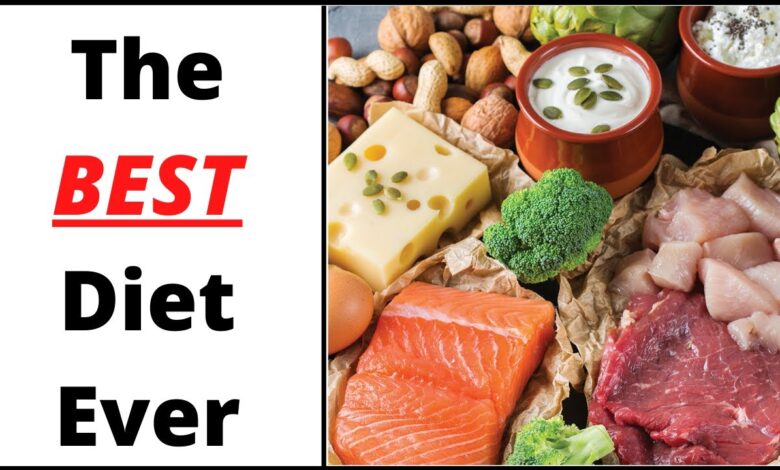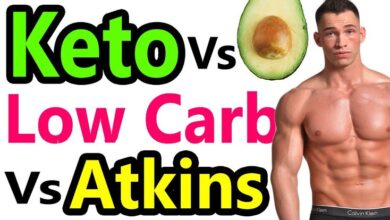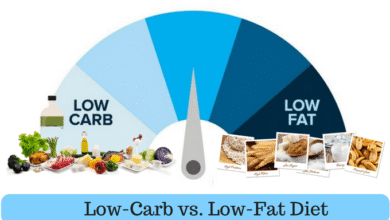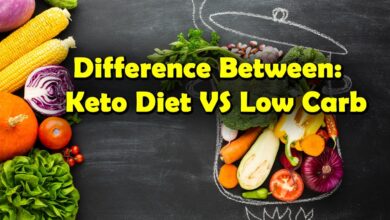Keto vs. Low-Fat for Weight Loss: The Ultimate Guide to Choosing the Best Diet for Fast and Sustainable Results

Weight loss is one of the most searched topics worldwide. From busy professionals in New York to university students in Lagos and health-conscious families in London, people everywhere are looking for diet solutions that actually work. With rising obesity rates in the United States, increasing lifestyle diseases in Africa, and growing awareness of healthy living in Europe, the question remains: Which diet truly works best—keto or low-fat?
The internet is flooded with stories of people who claim keto helped them drop 20 pounds in a month or that a low-fat diet gave them more energy and improved heart health. Yet for every success story, there’s a cautionary tale of burnout, side effects, or rebound weight gain. This is why choosing between keto and low-fat isn’t as simple as picking what’s trending on TikTok or Instagram—it requires a real understanding of science, sustainability, and personal lifestyle.
In this guide, we’ll break down everything you need to know about keto and low-fat diets. We’ll examine the science, benefits, drawbacks, affordability, and long-term outcomes. By the end, you’ll know exactly which diet is the right fit for you.
READ ALSO Best Keto Supplements for Weight Loss and Energy: Burn Fat Faster & Stay Energized
Understanding the Basics: What is the Keto Diet?
The ketogenic diet, widely known as keto, is more than just a fad—it’s a metabolic shift. The principle behind keto is simple: dramatically reduce carbohydrate intake so your body enters a state called ketosis, where fat (both dietary and stored) becomes the primary source of energy. Typically, keto involves eating about 70–75% of calories from fat, 20–25% from protein, and just 5–10% from carbohydrates.
Imagine starting your day with bacon, eggs, and avocado, followed by a lunch of grilled salmon and leafy greens, and ending with steak cooked in butter. That’s what keto looks like in practice. No bread, no rice, no pasta, and limited fruits.
Advocates argue that keto helps burn fat faster, reduces hunger, and improves mental focus. Medical studies suggest keto may benefit those with type 2 diabetes or epilepsy. However, critics point out that restricting carbs so strictly can be challenging and may lead to nutrient deficiencies if not carefully managed.
What Exactly is a Low-Fat Diet?
The low-fat diet became extremely popular in the 1980s and 1990s, promoted by governments and health organizations worldwide. The principle here is the opposite of keto—reduce fat intake while allowing more carbohydrates and lean proteins. On a typical low-fat plan, only about 20–30% of daily calories come from fat.
This means focusing on foods like rice, oats, beans, sweet potatoes, lean meats, whole grains, vegetables, and fruits. Cooking methods usually involve less oil, butter, or frying, emphasizing steaming, grilling, and boiling instead.
For many people, particularly in Africa where carb-based staples like yams, cassava, and maize dominate the food culture, low-fat diets feel more practical and affordable than keto. It doesn’t require cutting out entire food groups and may be easier for families to adopt.
Critics, however, argue that low-fat diets often lead to overconsumption of processed carbs, which can cause spikes in blood sugar and weight gain if not managed carefully.
The Science of Weight Loss: Calories vs. Macros
At its core, weight loss boils down to one scientific truth: calories in versus calories out. If you consume fewer calories than your body burns, you’ll lose weight. However, the way calories are distributed across macronutrients—carbs, fats, and proteins—can impact metabolism, hunger, and sustainability.
- Keto reduces carbs so drastically that your body burns fat for energy. This often reduces appetite because fat and protein are more satiating.
- Low-fat diets reduce calorie density by limiting high-fat, calorie-heavy foods, making it easier to eat more volume with fewer calories.
Think of it this way: keto changes what your body burns, while low-fat changes how much food you can eat per calorie. Both approaches work, but which one you choose depends on what you can maintain consistently.
Benefits of the Keto Diet
The keto diet has several compelling benefits that make it attractive for weight loss and beyond:
- Rapid Fat Loss: Many people experience fast results within weeks due to ketosis and reduced water retention.
- Stable Blood Sugar Levels: By cutting carbs, keto helps regulate insulin and blood sugar, which benefits people with type 2 diabetes.
- Reduced Hunger: High-fat meals keep you full longer, reducing the urge to snack.
- Mental Clarity: Some followers report improved focus and energy once adapted to ketosis.
- Better Triglyceride Levels: Research shows keto may improve markers of heart health like triglycerides and HDL cholesterol.
The fast results often make keto appealing for those who want visible weight loss quickly.
Drawbacks of the Keto Diet
While keto has benefits, it also comes with significant challenges:
- Keto Flu: The transition period can cause fatigue, headaches, and irritability.
- Nutrient Deficiencies: Cutting carbs also eliminates fiber and essential vitamins found in fruits and whole grains.
- Social Restrictions: Eating out becomes difficult since most foods contain carbs.
- Sustainability: Many people find it hard to stick to keto long-term due to its restrictions.
- Potential Heart Risks: Eating too much saturated fat can negatively impact cholesterol and cardiovascular health if not carefully managed.
For some, the initial excitement of fast fat loss fades when faced with the difficulty of maintaining the diet.
Benefits of the Low-Fat Diet
Low-fat diets also have strong advantages:
- Heart Health: Reducing saturated fats lowers the risk of heart disease and stroke.
- More Variety: Unlike keto, low-fat allows for a broader range of foods, including fruits, grains, and legumes.
- Accessibility: It’s easier to adopt in cultures where carb staples dominate.
- Affordability: Foods like rice, beans, and vegetables are cheaper than avocados, salmon, and nut butters.
- Long-Term Evidence: Low-fat diets have decades of research showing they support healthy weight maintenance.
For families and individuals looking for a sustainable, budget-friendly approach, low-fat often feels more realistic.
Drawbacks of the Low-Fat Diet
Despite its strengths, low-fat diets also have downsides:
- Hunger Pangs: Without enough fat, meals may leave you feeling less satisfied, leading to overeating.
- Blood Sugar Spikes: High-carb intake can cause glucose surges, especially in people with insulin resistance.
- Slower Results: Compared to keto, weight loss may be slower in the initial months.
- Over-Reliance on Processed Foods: Many “low-fat” packaged foods are high in sugar, defeating the purpose.
The key challenge here is balancing carb intake with nutrient-dense foods rather than falling into the trap of eating low-fat but high-sugar diets.
Keto vs. Low-Fat: Which Works Faster for Weight Loss?
If your goal is fast weight loss, keto usually wins. In the first few weeks, people often lose more weight on keto due to water loss and ketosis. Studies show that keto diets can outperform low-fat diets in short-term fat loss.
However, after six months to a year, the difference tends to level out. Long-term weight loss depends less on the type of diet and more on consistency. People who stick to their chosen plan—whether keto or low-fat—see results.
So ask yourself: Do you want rapid initial weight loss (keto), or do you prefer slower, steady results with more flexibility (low-fat)?
Impact on Heart Health and Cholesterol Levels
Heart health is critical, especially in regions like the U.S. and Europe, where cardiovascular disease is a leading cause of death.
- Keto and Heart Health: While keto may improve triglycerides and HDL (good cholesterol), it can raise LDL (bad cholesterol) if not carefully managed. Eating more healthy fats (olive oil, nuts, avocado) instead of processed meats and butter is key.
- Low-Fat and Heart Health: By cutting saturated fats, low-fat diets naturally support heart function and reduce stroke risk. However, overconsumption of refined carbs can increase triglycerides.
Both diets can support heart health when done properly, but both can also harm if followed carelessly.
Blood Sugar Control and Diabetes: Keto vs. Low-Fat
For people with type 2 diabetes, keto shows promising results. By reducing carbs, it lowers blood sugar and reduces reliance on insulin. Some patients even report reversing prediabetes with keto.
On the other hand, low-fat diets can also help regulate blood sugar if they emphasize whole grains, vegetables, and lean proteins rather than refined carbs.
Ultimately, diabetic patients should consult a doctor before choosing either diet. Keto may offer faster improvements, but it requires careful medical supervision.
Affordability and Accessibility Across Africa, U.S., and Europe
One often-overlooked factor in dieting is affordability:
- In Africa: Low-fat diets are cheaper and more practical since carb staples are widely available. Keto often feels expensive due to the cost of high-fat foods like cheese and salmon.
- In the U.S.: Both diets are accessible, though keto-friendly foods (grass-fed beef, almond flour, organic oils) can drive up costs.
- In Europe: Low-fat aligns better with traditional diets rich in bread, vegetables, and lean meats. Keto requires more planning and higher food budgets.
When money is tight, low-fat often wins the affordability battle.
Long-Term Sustainability: Which Diet is Easier to Maintain?
Sustainability is the ultimate test of a diet.
Keto demands strict carb restriction, which many find impossible over the long term. Social situations, cultural foods, and cravings often push people off track. Some succeed, but many relapse into old eating habits.
Low-fat diets, while slower in producing results, are easier to maintain long-term because they don’t restrict entire food groups. People can still enjoy fruits, rice, bread, and beans, making it more sustainable for daily life.
In essence, keto is like a sprint, while low-fat is like a marathon. Which works best depends on your lifestyle and mindset.
What Nutritionists and Doctors Say
Most healthcare professionals agree on one thing: the “best” diet is the one you can stick to. While keto may provide rapid short-term results, nutritionists caution against cutting out whole food groups permanently.
Doctors often recommend balanced diets—whether lower in fat or carbs—that include plenty of vegetables, lean proteins, and whole grains. For patients with specific health issues (like diabetes), they may recommend keto under supervision.
The consensus is clear: both diets can work, but sustainability and nutrient balance are more important than following diet trends.
Psychological Factors: Cravings and Emotional Eating
Weight loss isn’t just physical—it’s psychological. Cravings, stress eating, and cultural habits influence diet success.
Keto may reduce cravings for sugar since carbs are off-limits, but the strictness can backfire, leading to binge episodes. Low-fat diets allow more flexibility, which can reduce feelings of restriction, but the availability of carbs may trigger overeating.
Understanding your eating habits is crucial. If you struggle with carb addiction, keto may help reset cravings. If you need flexibility, low-fat may be better.
Success Stories: Real People, Real Results
- A U.S. office worker lost 50 pounds in 8 months with keto but returned to old habits after finding it unsustainable.
- A Nigerian student lost 30 pounds over a year on a low-fat diet and found it easier to maintain alongside cultural foods.
- A European athlete alternated between keto and low-fat depending on training cycles, proving that flexibility is possible.
These stories show that personal context, culture, and discipline matter more than diet labels.
Who Should Avoid Keto or Low-Fat Diets?
- Avoid Keto if: You have kidney disease, eating disorders, or difficulty sustaining strict diets.
- Avoid Low-Fat if: You struggle with blood sugar control, insulin resistance, or high-carb cravings.
Always consult a healthcare provider before starting a new diet.
Tips for Choosing the Right Diet for You
- Assess your lifestyle—busy professionals may prefer keto’s satiety; families may prefer low-fat flexibility.
- Consider affordability—low-fat is cheaper for most regions.
- Check your health status—diabetics may benefit from keto, but heart patients may prefer low-fat.
- Think long-term—pick a diet you can sustain for years.
- Stay balanced—whichever diet you choose, focus on whole, unprocessed foods.
Meal Plan Examples: Keto vs. Low-Fat
| Meal | Keto Example | Low-Fat Example |
|---|---|---|
| Breakfast | Eggs with avocado and bacon | Oatmeal with banana and skim milk |
| Lunch | Grilled salmon with broccoli and butter | Rice, beans, and grilled chicken |
| Dinner | Steak with spinach and olive oil | Sweet potato, vegetables, lean beef |
Conclusion
So, keto or low-fat—what’s the verdict? The truth is both can help you lose weight if done correctly. Keto offers fast results and appetite control, but it’s restrictive and costly. Low-fat is affordable, flexible, and sustainable, but results may take longer.
The real secret isn’t in the label—it’s in the lifestyle. The best diet for weight loss is the one you can maintain without feeling deprived or financially strained. Whether you’re in Africa, the United States, or Europe, the choice comes down to your health goals, food culture, and long-term vision.
READ ALSO Weight Loss After 40: Keto Meals That Balance Hormones Naturally for Faster Fat Burn
FAQs
1. Can I combine keto and low-fat diets?
No. Keto requires high fat while low-fat restricts it. Mixing both cancels their benefits.
2. Which diet burns belly fat faster?
Keto shows faster initial results, but both can reduce belly fat long-term with consistency.
3. Is keto safe for diabetics?
Yes, under medical supervision. It helps control blood sugar but requires strict monitoring.
4. Is a low-fat diet better for heart health?
Generally yes, especially when paired with whole grains, fruits, and lean proteins.
5. Which is cheaper worldwide?
Low-fat is more affordable in Africa and Europe, while keto is more expensive due to high-fat food costs.




